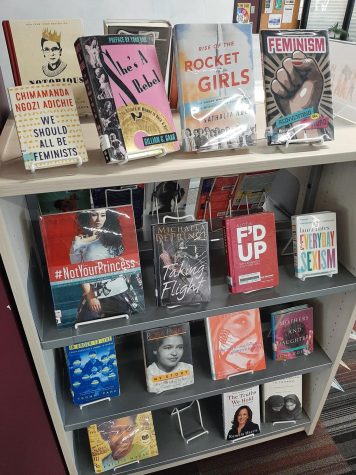A Better Way to Elect the President: the 30-30 System
In recent history, the topic of the Electoral College has become quite controversial. This is in part due to what occurred during the 2016 Presidential election. Although Hilary Clinton won the popular vote by over two million votes, she did not become President. This is because of the Electoral College.
To become President in the United States, a candidate does not need to win the popular vote. Instead, he or she must get more electoral votes than opponents and at least 270 electoral votes in total. In 2016, Donald Trump won the Presidential race. Clinton received a total of 227 electoral votes, while Trump got 304.
This was the fifth presidential race in which the winner of the popular vote lost the overall election.
Both Systems Have Flaws
No matter what critics of either system say, one thing remains clear: neither system is perfect. Both have advantages and disadvantages.
In short, the Electoral College is very good at giving a voice to less populous states. However, it does this by inflating the vote of the individuals in those smaller states. This technically means that if you live in a state like California, your vote has less of a say in the election than a vote from a citizen living in Wyoming.
In contrast, the popular vote is very good at making sure every vote has an equal say. With a popular vote, your vote would be worth the same no matter what state you live in. However, a popular vote can potentially lead to a majority threatening a minority. In extreme instances, voters from the few most populated states could elect a candidate without that candidate having a single vote in the rest of the states.
If you want a more detailed analysis of the benefits and flaws of both systems, click here.
The 30-30 System
With arguments from both sides over which system is better, few consider if there is a better system altogether. Is it possible to put something in place with the benefits of both the Electoral College and the popular vote?
Yes… I have a better idea.
As laid out above, both systems are strong in one category and weak in another. The Electoral College is strong in protecting smaller states, but is weak in giving everyone an equal say. The popular vote is the opposite. It is strong in giving everyone an equal say, but is weak in protecting smaller states.
A possible solution to this is implementing a popular vote with an added percentage criteria. In order to win the presidential election, not only would a candidate need to win the popular vote, but they would additionally need to gain at least 30% of the vote in 30 states. This would weight everyone’s vote the same, while prohibiting a bare majority from the top few most populous states.
What would happen if a candidate wins the popular vote but doesn’t achieve 30-30?
If a candidate somehow wins the majority without achieving at least 30% support in 30 states, the other candidates are given a chance. If a candidate who did not win the popular vote achieves the 30-30 criteria, the election will be decided by the electoral map as a compromise. This allows for the electoral college to be used as a safety net in case a candidate wins the popular vote without reasonable support from the majority of states. Even though the electoral college doesn’t weigh votes equally, it is preferable than a candidate being selected without little to any support from most of the states.
If a candidate who didn’t win the popular vote does not themselves even achieve the 30-30 criteria, the presidential nomination will simply go to the candidate who won the popular vote, even if they didn’t receive 30-30.
Why 30-30?
In itself, there is nothing special about the number 30.
What is more important than the number itself, is the idea it conveys. The point of this piece isn’t to say that 30-30 is the best ratio to use but to simply introduce the concept of a percentage criteria. Although the ratio could most likely be optimized by mathematicians to guarantee fairness in an election, the rationale stands.
Numbers aside, it is clear that the addition of a percentage criteria to the election process would capture the benefits of both the Electoral College and popular vote, while solving each of their unique problems.
A criteria like 30-30 keeps the original hopes of the Founding Fathers alive, by protecting states with smaller populations. A rule like 30-30 requires that a candidate has reasonable support from a majority of the states. Therefore, a candidate cannot ignore less populous states on the campaign trail, and cannot win alone from the support of the few most populated states.
It also keeps progressives happy, with a popular vote becoming the main component of the election process. By the popular vote being implemented, it makes every single American’s vote worth the same. It is not inflated or deflated by electoral votes that currently have to represent varying population sizes.
How Does 30-30 Hold Up To Past Elections?
If this system had already been implemented, past elections would have much different results. There have been five elections in which the person who one the popular vote did not become President.
In 2016, Hilary Clinton would have won, making her the first female President. She won the popular vote and received well over 30-30, with at least 30% support in 45 states.
In 2000, Al Gore lost to George W. Bush in the Presidential election. However, Al Gore won the popular vote and accomplished 30-30 easily. He received at least 30% support in 47 states.
In 1888, Grover Cleveland lost to Benjamin Harrison by 65 electoral votes (233-168). However, Cleveland won the popular vote by almost one million votes. Although there weren’t 50 states back then, and Washington D.C. didn’t have any electoral votes, the 30-30 system can be adjusted to account for the difference. Since there were only 38 states in 1888, a candidate would need 30% support in about 25 states. (30/51 x 38). Cleveland was able to get 30% support in 37 states. This would have made him victorious over Benjamin Harrison.
In 1876, Rutherford B. Hayes became President. This is despite the fact that Samuel Tilden got over 50% of the national popular vote. Since there were also 38 states in 1876, Tilden would also need 30% support in 25 states as well to achieve the equivalent of a 30-30 criteria. In the election, Tilden scored 30% in 37 states (A popular vote not used in Colorado). The defeat is even more crushing for Samuel Tilden because of the fact that he only lost by one electoral vote (184-185).
In 1824, there were four candidates with a substantial percentage of the popular vote. However, the two main competitors were John Quincy Adams and Andrew Jackson. Adams would be elected President by the House of Representatives even though Jackson received over 10% more of the popular vote. The House was needed, because no candidate received a majority of the electoral votes. A 30-30 percentage cannot realistically be applied in this election, due to the fact that six out of the 24 states did not use a popular vote. In addition, Adams was only on 16 out of the 24 state ballots and Jackson was only on 13 of the state ballots. Even though Jackson won the popular vote, to hold up to 30-30, he would have needed at least 30% support in 14 states (30/51 x 24). This is impossible, because he was only on 13 state ballots.
If this system had been used throughout American history four elections would have had different victors (The election of 1824 cannot be counted due to the conditions).
How different would our country look today if the 30-30 system or a percentage criteria had always been used?

Grant Preves is a senior and is on news team for his third year. He has enjoyed co-hosting The Howl and having political debates with fellow news team...



